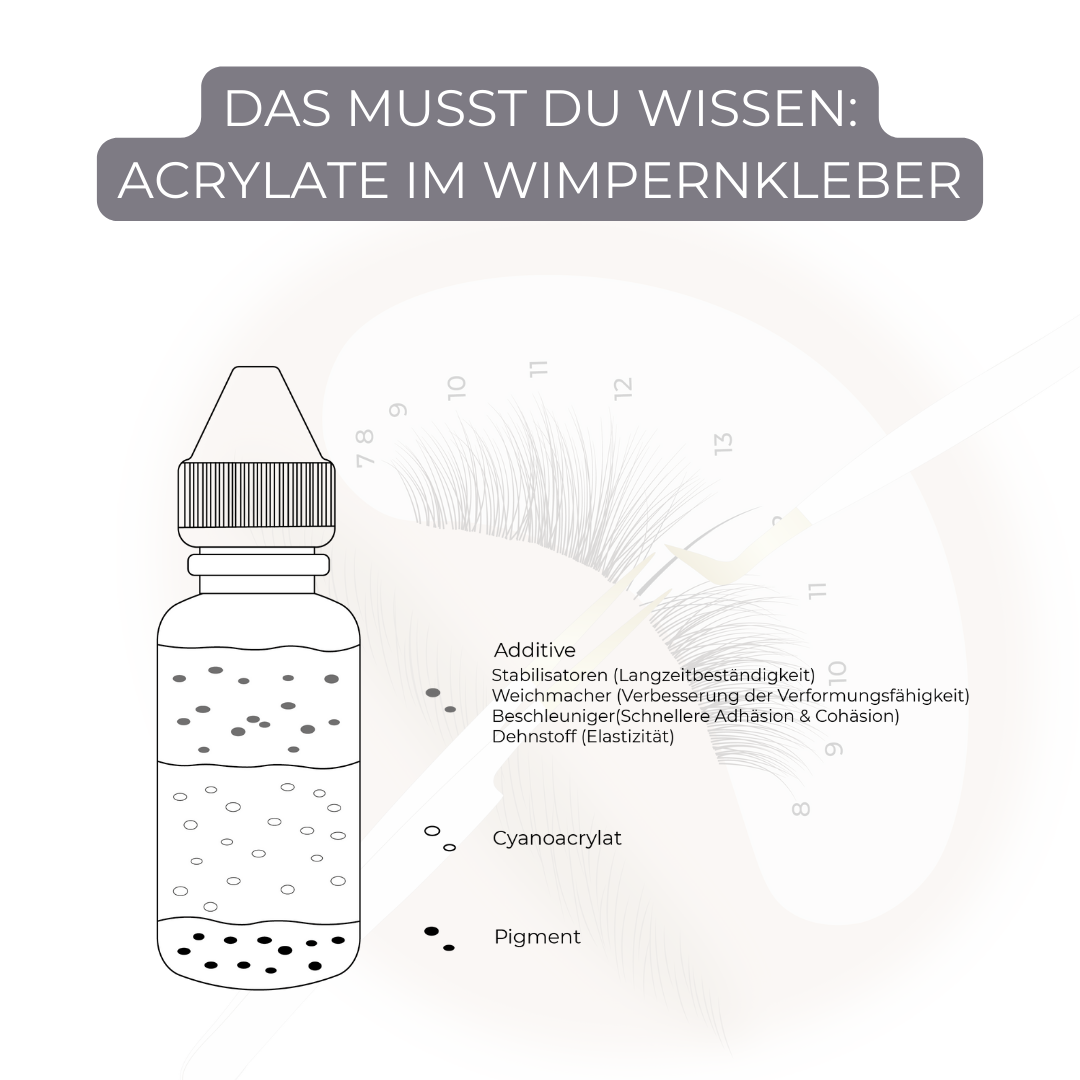
Acrylates - Knowledge (Polyacrylate-Cyanoacrylate)
Crude oil: an everyday object
Without "black gold", our modern everyday life would be unthinkable.Refining
The extracted crude oil must be converted into petroleum through refining before it can be used as a fuel. As crude oil consists of more than 500 components, refining also produces by-products.By-products of refining
Plastics made from crude oil are ubiquitous. Around 15% of the crude oil extracted is used to produce plastics. Products such as PVC flooring, medical devices, window frames, foams in mattresses and upholstered furniture and most of today's clothing are made from acrylic fibers. Even everyday items such as yogurt pots, cream jars and DVDs are made from petroleum. Some chemical products such as surfactants in detergents, ammonium salts in fertilizers and certain medicines such as ammonia are also made from petroleum. Most adhesives, paints and varnishes are also synthetic petroleum products.Main ingredients of eyelash adhesives
The most commonly used ingredient in eyelash adhesives is cyanoacrylate, but polyacrylate is also becoming increasingly popular. Polyacrylate has the advantage that it evaporates differently than cyanoacrylate during polymerization and is therefore less irritating.Difference between cyanoacrylate and polyacrylate
While cyanoacrylate is initially produced during manufacture, polyacrylate is produced later in the process. Polyacrylate is more noble and therefore evaporates differently than cyanoacrylate during polymerization.Adhesive vapors as a trigger for reactions
Polyacrylate vapors are less "aggressive" than cyanoacrylate vapors, which improves their tolerability. Customers who react to conventional eyelash adhesives usually do so because of cyanoacrylate vapors. The risk of a reaction is therefore lower with polyacrylate. This also explains why some customers can wear eyelash extensions with polyacrylate eyelash adhesives without any problems.Which other ingredient can cause reactions?
Sometimes, however, customers do not react to acrylates, but to other ingredients in the eyelash glue. The pigment in the glue is thought to be the second most common cause of reactions.Polyacrylate eyelash glue only for sensitive customers?
An eyelash glue with polyacrylate is not only suitable for sensitive customers, but can also be used as a standard glue as it has excellent long-term adhesion properties.UV eyelash glue with the main ingredient photoinitiator
Another innovative development in the field of eyelash adhesives is the UV eyelash adhesive, which uses photoinitiator as its main ingredient. This type of adhesive hardens under ultraviolet light and offers several advantages over conventional adhesives. The main ingredient, the photoinitiator, reacts to UV light to initiate the hardening process of the adhesive. This allows lashes to be applied faster and more efficiently as no drying time is required. In addition, UV eyelash glue often offers improved durability and flexibility, resulting in a more natural look and a long-lasting result.What kind of sensitive adhesives did we used to have?
In the past, attempts were made to reduce the amount of cyanoacrylate in order to produce less fumes during polymerization. However, this resulted in a very slow adhesive and a shorter shelf life. This was not practical in everyday studio use and did not necessarily make customers happy either.Thank you for reading!
Copyright CFB Cosmetics GmbH


